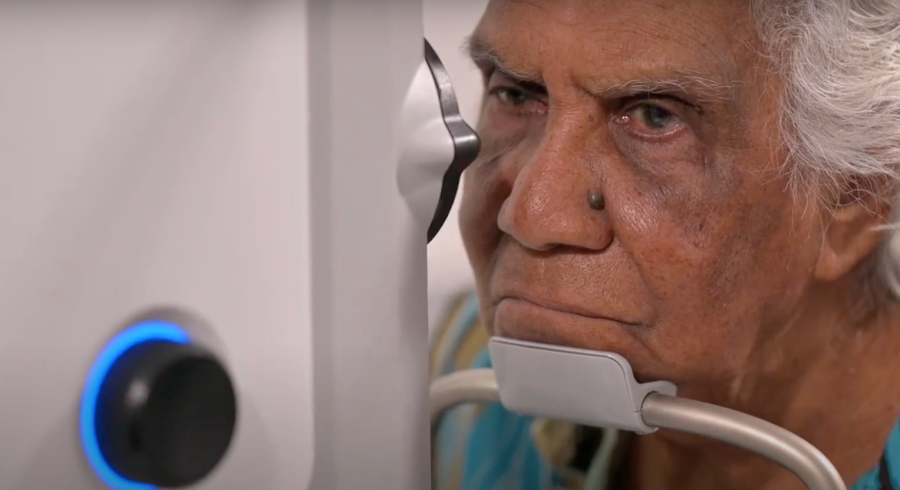AI system based on Moorfields model tackles eye health inequalities in outback Australia
A mobile retinal camera with fully integrated artificial intelligence (AI) is being deployed in remote Western Australia in an effort to prevent rural and Indigenous Australians going blind from Diabetic Retinopathy (DR). This is a sight-threatening condition that disproportionately affects Australians in outback regions, and is the leading cause of blindness globally in working-age people.
Pioneered by Australian non-profit organisation Lions Outback Vision, the breakthrough medical AI service was developed in collaboration with technology partners Google and Topcon, with support from Moorfields Eye Hospital NHS Foundation Trust, UCL Institute of Ophthalmology (IoO) and INSIGHT Health Data Research Hub.
Following a one-year pilot, the mobile AI service was awarded a grant of A$5 million (£2.5m) from the West Australian government in October to fund implementation in the Pilbara. With a population of just 45,000 in an area almost twice the size of the UK, access to health services is extremely limited.
Currently, patients are screened, their photos sent to a specialist for diagnosis, and then reviewed by a consultant if needed. The new AI-enabled model provides instant point-of-care diagnosis and an on-the-spot telehealth appointment with an ophthalmologist for anyone flagged as high risk. The mobile system has the capacity to reach people living in areas where screening services are not currently accessible.
The next phase of the initiative will use the world’s first AI foundation model for eye health, RETfound, to fine tune the DR algorithm for Indigenous people, using locally gathered data to enhance accuracy. Developed in 2023 by researchers at Moorfields and the IoO utilising 1.6 million anonymised eye images from Moorfields’ patients, RETFound will also enable expansion of the AI system to detect cardiovascular disease from eye scans.
This technology is expected to have a significant impact on remote West Australian communities. The rate of blindness among Indigenous Australians is currently almost three times higher than that for non-Indigenous Australians, and cardiovascular disease is the leading cause of the gap in death rates between Indigenous and non-Indigenous Australians, according to the Australian Government.
Australian ophthalmologist Mark Chia, part of the Lions Outback Vision team led by Professor Angus Turner, facilitated the project during his PhD in London with Pearse Keane, consultant ophthalmologist at Moorfields Eye Hospital, Professor of Artificial Medical Intelligence at the IoO and director of INSIGHT.
Pearse Keane said: “There is immense potential for medical AI to reduce health inequalities in low-resource settings, and this is an exciting use case. By providing a novel AI solution to the problem of geographic isolation and limited access to health services, care providers in the remote Pilbara region now have the power to help close the gap in eye health between outback and urban populations.
Mark Chia commented: “Working with our collaborators in the UK, we have been able to bring together world-leading data science and medical AI expertise with the experience and ingenuity of eyecare professionals in Australia to develop an original approach to saving sight, and saving lives, in remote parts of the country.
Professor Angus Turner added: “The deployment of this mobile retinal camera with ‘on-the-spot’ diagnosis across the Pilbara has already begun to make a significant impact. By improving access to eye screening, we’re ensuring that people living in remote places have access to diagnosis that can prevent blindness with early treatment. This innovation is a game-changer for healthcare delivery in the region.” For further information, please contact Gordon.harrison3@nhs.net
Source: Moorfields Eye Hospital
